
MAY 2023 • Vol.10 • No.05 (ISSN 2564-2006) 17 12 31 38 Navigating Absenteeism Challenges And Fostering Employee Engagement - Exclusive interview with Anastasiia Khyzhniak, Human Capital Director, Jooble 9 Businesses Share Their Stance On Offering Unlimited PTO - Brett Farmiloe, Terkel 6 Ways HR Can Build Trust And Manage Employees At Workplace - Jennie Yang, 15Five Paid Vacation: Why Is The U.S. Trailing Behind The Rest Of The World? - Mairead Walsh, Softworks HOW TO ADDRESS EMPLOYEE ABSENTEEISM IN THE WORKPLACE? - Kiljon Shukullari, HR Advice Manager, Peninsula Canada


07 INDEX On the Cover Workforce Management, Time & Attendance, Excellence MAY 2023 Vol.10 No.05 Articles 24 How To Create An Efficient Workload Management Process Setting performance expectations and monitoring progress for quality delivery - Charu Gupta, Outreach Specialist, Groww 34 Paid Flexible Leaves How employers can satisfy all obligations under the Labor Standards Act - Eveline Poirier, Partner in the Employment & Labour Group, Stikeman (ISSN 2564-2006) How To Address Employee Absenteeism In The Workplace? Implementing effective measures to handle absenteeism and maintain productivity - Kiljon Shukullari, HR Advice Manager, Peninsula Canada 09 The Productivity Paradox: Why're We Working More, But Producing Less? Exploring the need for worker well-being in today's economy - Marcus Mossberger, Future of Work Strategist, Infor 15 How Analytics And Metrics Can Help Address HCM Challenges Key metrics HR team can gain from an HCM solution - Frank Diassi, Chairman, Unicorn HRO
Navigating Absenteeism Challenges And Fostering Employee Engagement
Exclusive interview with Anastasiia Khyzhniak, Human Capital Director, Jooble
9 Businesses Share Their Stance On Offering Unlimited PTO Strategies for implementing and managing unlimited PTO policies

- Brett Farmiloe, Founder and CEO, Terkel
6 Ways HR Can Build Trust And Manage Employees At Workplace



Building a positive workplace culture in a hybrid and remote work era
- Jennie Yang, VP, People & Culture, 15Five
17 31 38
Paid Vacation: Why Is The U.S. Trailing Behind The Rest Of The World?
Time off from work is integral to good mental and physical health, sustained productivity, and high performance
- Mairead Walsh, Chief Marketing Officer, Softworks
Top Picks 12
INDEX
How are our Workforce Management Products and Services helping to make you smarter?
Workforce Management Excellence - Monthly Interactive Learning Journal
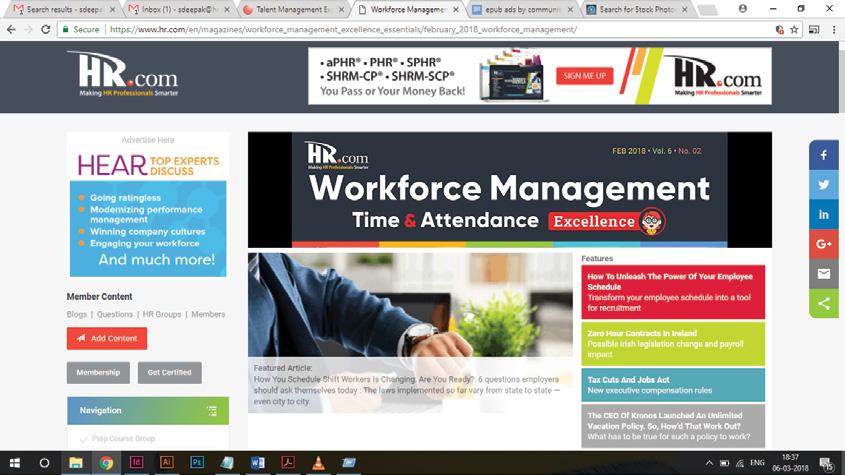
This monthly interactive learning experience showcases activities, processes, and tools needed to manage a workforce.
Workforce Management Virtual Events
Virtual Events in the Workforce Management encompasses all the activities, processes, and tools needed to manage a workforce. A comprehensive WFM system includes planning, forecasting, scheduling, and tracking workers to optimize the balance of customer, employee, labour laws and organizational needs. Be informed and understand the latest WFM trends through Workforce Management Virtual Events. Each Virtual Event consists of up to 10 credit webcasts.
Workforce Management Webcasts for Credit

HR.com webcasts deliver the latest Workforce Management industry news, research trends, best practices and case studies directly to your desktop. Webcasts are available live online with a downloadable podcast and a copy of the slides (PDF) available before and after each webcast. Earn all of the required recertification credits for aPHR, PHR, SPHR, GPHR, and SHRM Certifications. HR.com’s one-hour webcasts, in every HR specialty including HRIS and Payroll, are pre-approved for HRCI and SHRM credit (excluding Demo webcasts).
Workforce Management Community
Join almost 21,700 HR.com members with a similar interest and focus on rewards and recognition. Share content and download research reports, blogs, and articles, network, and “follow” peers and have them “follow” you in a social network platform to communicate regularly and stay on top of the latest updates. This well established Workforce Management Community is an invaluable resource for any HR professional or manager.
Use these invaluable Workforce Management resources today! For more information phone: 1.877.472.6648 | email: sales@hr.com | www.hr.com
Editorial Purpose
Our mission is to promote personal and professional development based on constructive values, sound ethics, and timeless principles.
Excellence Publications
Debbie McGrath CEO, HR.com - Publisher
Sue Kelley Director (Product, Marketing, and Research)
Babitha Balakrishnan and Deepa Damodaran Excellence Publications Managers and Editors
Workforce Management, Time & Attendance, Excellence Team

Deepa Damodaran, Editor
Koushik Bharadhwaj Jr. Editor
Arun Kumar R Design and Layout (Digital Magazine)
Vibha Kini Magazine (Online Version)
Submissions & Correspondence
Please send any correspondence, articles, letters to the editor, and requests to reprint, republish, or excerpt articles to ePubEditors@hr.com
For customer service, or information on products and services, call 1-877-472-6648
Workforce Management, Time & Attendance, Excellence (ISSN 2564-2006)
is published monthly by HR.com Limited, 56 Malone Road, Jacksons Point, Ontario L0E 1L0
Internet Address: www.hr.com
Debbie Mcgrath Publisher, HR.com
Deepa Damodaran Editor, Workforce Management, Time & Attendance, Excellence

How to Navigate Employee Productivity Issues in a Hybrid Workplace
Employeeabsenteeism is a prevalent issue that affects businesses across various industries in the United States. When employees are consistently absent or frequently miss work, it can have significant consequences for organizations.
This disruption not only impacts productivity and efficiency but also affects employee morale, team dynamics, and overall business operations.
This month, we will explore the implications of employee absenteeism on businesses and the strategies employers can employ to mitigate its negative effects, among other topics.
Featured on the cover is Kiljon Shukullari’s, from Peninsula Canada, How To Address Employee Absenteeism In The Workplace? Here, the author outlines five effective strategies and perspectives to address employee absenteeism and enhance productivity in your organization.
Also, read the exclusive interview with Anastasiia Khyzhniak, Human Capital Director, Jooble, Navigating Absenteeism Challenges And Fostering Employee Engagement, as she sheds light on how the company has been navigating and adapting to the Russia-Ukraine war. The interview covers a range of topics, including managing absenteeism, presenteeism, and productivity issues faced by the company.
Additionally, Marcus Mossberger from Infor contributes an intriguing piece titled The Productivity Paradox: Why’re We Working More, But Producing Less? that explores the importance of worker well-being in today’s economy.
In 9 Businesses Share Their Stance On Offering Unlimited PTO, Brett Farmiloe from Terkel provides valuable insights into implementing and managing unlimited paid time off policies, and highlights the strategies and considerations involved in adopting this flexible approach to time off. Charu Gupta from Groww, in How To Create An Efficient Workload Management Process, will help us understand how to effectively set performance expectations and optimize workload management in the workplace.
That is not all. This issue also includes several other informative articles on workforce management and time and attendance that we hope will assist you in achieving excellence and efficiency in your workforce management efforts.
Happy Reading!
Disclaimer: The views, information, or opinions expressed in the Excellence ePublications are solely those of the authors and do not necessarily represent those of HR.com and its employees. Under no circumstances shall HR.com or its partners or affiliates be responsible or liable for any indirect or incidental damages arising out of these opinions and content.
EDITOR’S NOTE
Subscribe now for $99 / year And get this magazine delivered to your inbox every month Become a Member Today to get it FREE! SIGN UP OR For Advertising Opportunities,
Copyright © 2023 HR.com. No part of this publication may be reproduced or transmitted in any form without written permission from the publisher. Quotations must be credited.
email: sales@hr.com
Write to the Editor at ePubEditors@hr.com
In a world of unparalleled challenges (global pandemic, racial injustice, political rivalry, digital 4.0, emotional malaise), uncertainty reigns. Finding opportunity in this context requires harnessing uncertainty and harnessing starts with reliable, valid, timely, and useful information. The Excellence publications are a superb source of such information. The authors provide insights with impact that will guide thought and action.
Dave Ulrich
Rensis Likert Professor, Ross School of Business, University of Michigan Partner, The RBL Group

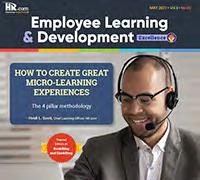
Excellence publications are my ‘go-to’ resource for contemporary and actionable information to improve leadership, engagement, results, and retention. Each edition offers rich and diverse perspectives for improving the employee experience and the workplace in general.



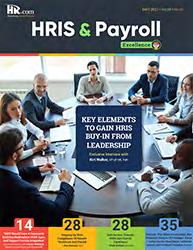
 Julie Winkle Giulioni Author, Virtual /Live Keynote Presenter, Inc.’s Top 100 Leadership Speakers
Julie Winkle Giulioni Author, Virtual /Live Keynote Presenter, Inc.’s Top 100 Leadership Speakers


I regularly read and contribute to Leadership Excellence and Talent Management Excellence. I use many of the articles I read to augment my own presentations and I often share the articles with my clients. They are always quick, right on target for the latest issues in my field, and appreciated by my clients. If you want to stay up to date on the latest HR trends, choose a few of the different issues from the Excellence series of publications.
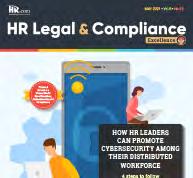


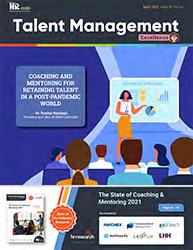
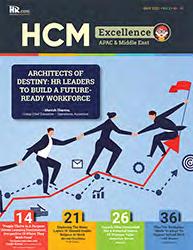
We’re eager to hear your feedback on our magazines. Let us know your thoughts at ePubEditors@hr.com


WHY EXCELLENCE PUBLICATIONS?
Dr. Beverly Kaye CEO, BevKaye&Co.
How To Address Employee Absenteeism In The Workplace?

Implementing effective measures to handle absenteeism and maintain productivity
By Kiljon Shukullari, Peninsula Canada
Itis very common for business owners to have to deal with absenteeism related to sickness, among other reasons, in their workplace. The downside
to such absences can often be disruptive to the business if left unmanaged. How can employers properly deal with this issue?
Workforce Management, Time & Attendance, Excellence presented by HR.com May 2023 7 Submit Your Articles
COVER ARTICLE
1. Establish a Clear Absence Management Policy
Businesses need to have a policy in place that defines what an acceptable absence is and what can be classified as paid time off. It can also include the number of absences allowed and the number of absences that will not be accepted. The policy should also include clear disciplinary action for employees who violate the policy.
A well-written absence management policy will help managers address employee attendance issues proactively.
2. Flexible Work Policies
Implementing a flexible work policy not only positively impacts employee well-being and retention, but also helps reduce absenteeism. For example, instead of an employee taking the day off for an appointment, they can go to their appointment and return to work. They can feel confident knowing that coming to work a little later or having to leave work for their appointment will not impact their workday.
3. Finding the Cause of the Absences
Employers must consider different options depending on the duration, frequency, and underlying cause of absences. For example, if an employee frequently
takes one or two days off here and there due to illness, employers should investigate the underlying reason for the absences before considering disciplinary action.

4. Keep Track of Employee Absences
When it comes to dealing with employee attendance, it is important to keep track of absences. Without a strategy in place for how to document employee absenteeism at work, it may be hard to keep track of employee attendance and flag when absences start to become a pattern.
5. Build a Healthy Workplace Environment
There are many reasons for absenteeism, but it is often linked to a stressful or unhealthy work environment. Employers can look at ways to reduce workplace stress, such as implementing a wellness program.
Would you like to comment?
Workforce Management, Time & Attendance, Excellence presented by HR.com May 2023 8 Submit Your Articles
Kiljon Shukullari is HR Advice Manager at Peninsula Canada.
How To Address Employee Absenteeism In The Workplace?
The Productivity Paradox: Why're We Working More, But Producing Less?
Exploring the need for worker well-being in today's economy
By Marcus Mossberger, Infor
RecentlyI was reading through a report by McKinsey, and I learned that productivity growth in the U.S. has averaged a meager 1.4% over the past 15 years, with the rest of the world experiencing similar slowdowns. This struck me as strange considering the deluge of digital tools that have been introduced to the workplace over the same time period. Speaking of strange… the U.S. added 311,000 jobs in March 2023, and is still experiencing unemployment rates close to 50-year lows (3.6%) despite slowing economic growth, high inflation, and soon-to-be even higher interest rates. What gives?
If employees are working more and producing less, what can we do to reverse this concerning trend, both now and in the future?
There are a wide variety of hypotheses that attempt to explain why productivity has suffered recently, but I am going to focus on one so we can explore possible solutions.
My speculation is simple: people are tired, and there are not enough of them Another McKinsey report suggests that nearly half (48%) of people are abandoning their jobs for entirely new industries. During the height of the pandemic, healthcare organizations experienced 30%+ turnover as nurses clearly communicated they were burned out and bolting. Today in the U.S., there are approximately 6 million unemployed and 11 million job openings. I am no mathematician, but a shortage of 5 million seems like a pretty significant problem.
And if all that is not enough, the labor participation rate is also down from 67% in the 90s to 62.1% as of January.
So now what? I would argue that the tactics needed to address our exhausted employees are the same ones that will lure the elderly and others back to work. These plans and policies all focus on the same thing: worker well-being. To be clear, this is not another wellness program that offers yoga classes or discounts on health insurance premiums for participating in health screenings. I am talking about foundational shifts in how work is structured, executed, and measured by giving people flexibility, freedom, and control. In other words, we need to redesign almost everything.
Workforce Management, Time & Attendance, Excellence presented by HR.com May 2023 9 Submit Your Articles
Henry Ford was a pioneer in this way of thinking and astonished many when he adopted a five-day, 40-hour work week back in the 1920s. His reasoning was not necessarily altruistic… he believed that his people would be more productive if they spent less time at the factory each day and had more time for leisure each week. He also made it a point to break the work down into manageable elements and was quoted as saying, “Nothing is particularly hard when you divide it into small jobs”.
Almost 100 years later, a recent report by Deloitte suggests we may be witnessing the “end of jobs” as organizations would be better served by hiring people with transferrable skills that allow them
to be productive and efficient in a constantly changing environment. In short, maybe we should focus on doing less with less. Today, most companies have adopted a hybrid environment that allows at least some remote work and flexible scheduling, a number of industries are experimenting with distributed authority and self-management structures, and several governments and organizations have been piloting the 4-day week (with remarkable results, including an increase in productivity). Technology, including AI and other advanced capabilities, will undoubtedly play an oversized role in empowering contemporary companies and their employees in the future.
Leading organizations invest 2.6 times more in technology and make it a point to free up their top performers to address their biggest challenges. Whether or not you want to join them is up to you.
Marcus Mossberger is the Future of Work Strategist at Infor
Would you like to comment?

Workforce Management, Time & Attendance, Excellence presented by HR.com May 2023 10 Submit Your Articles The Productivity Paradox: Why're We Working More, But Producing Less?

ePublication EditorialCalendar2023 CheckoutthenewandupcomingthemedHR topicsinWorkforceManagement,Time&Attendance,Excellence. Check ePublications Editorial Calendar Here. Would you like to submit an article? | Write to us at ePubEditors@hr.com Submission Guidelines 1 Workforce Management Technologies Jun 2023 2 Absenteeism - Interview Special May 2023 3 Overtime Apr 2023 4 Employee Leave/Vacation Mar 2023 5 Employee Scheduling Feb 2023 6 Time Tracking for White Collar Worker and Project Management Jan 2023
Amidst Russia’s invasion and the ongoing challenges faced by Ukraine, the year 2022 has proven to be particularly difficult for Jooble, a Ukraine-headquartered job search engine and aggregator company. In spite of the ongoing turmoil and the significant number of Ukrainians seeking refuge in neighboring countries, Jooble maintains a committed workforce that perseveres by working remotely from various locations within the country, even in the midst of the war.
The devastating impact of the conflict on the mental health of the population is a grave concern. The World Health Organization estimates that around 10 million people, equivalent to a quarter of Ukraine’s population, may experience mental health disorders as a result of the war.
In an exclusive interview with HR.com, Anastasiia Khyzhniak, the Human Capital Director of Jooble, sheds light on how the company has been navigating and adapting to the crisis. She addresses the various challenges they have faced, including managing absenteeism, presenteeism, and productivity issues, among others.
Navigating Absenteeism Challenges And Fostering Employee Engagement
Q.What are the most important changes you brought to your leave policy since the war and Covid-19 pandemic?
Anastasiia: Since a significant part of Jooble’s employees are either Ukrainians abroad or in Ukraine currently, we have not been adapting our absenteeism policies much lately. The only update we are considering is setting a limit after which vacation days can no longer be accumulated so that people do not just collect days but use them.
We encourage people to take days off after a heavy missile attack at night. It is better to give people time to recover than build on that stress and actually cause presenteeism.
Q.What are the main challenges you faced while managing the absence of employees, and how have you addressed them?
Anastasiia: Since our working approach is built heavily on trust - we do not track working hours and believe people can manage their schedules, it is easy to abuse that trust. For example, not to work without booking a day off. In the long run, you still start to see the patterns: when the same person

Workforce Management, Time & Attendance, Excellence presented by HR.com May 2023 12 Submit Your Articles
Straight Talk with HR.com
TOP PICK
Q&A with Anastasiia Khyzhniak, Human Capital Director, Jooble
is always super slow to answer your questions on Slack or when he/she frequently misses deadlines. Therefore, we prefer to keep the trust-based approach that gives a certain degree of freedom to responsible people, who can appreciate it and sometimes deal with cases of people who try to game the system.
There is also a question of helping your managers to learn how to plan their team’s vacation and compensate for sudden absences. Anyone could fall sick and the timing could sometimes be unfortunate. But you cannot punish them for feeling unwell, even if it happens several times within a few weeks.
As a manager, you must think of potential risks, even imagining that several of your team members fall sick simultaneously, primarily if you depend on them to reach an important deadline.
I recommend that managers must not always load their time to 100% of their capacity, and should have space to support the team if one of their colleagues is suddenly off.
Q.What kind of productivity challenges have you faced over the past year?
Please elaborate.
Anastasiia: We have not faced any productivity issue, per say. Most Ukrainians, who can keep working, feel that it is their duty to continue supporting the economy and earning money to donate to the Ukrainian army and humanitarian causes here.
We had people working from bomb shelters - many said that work helped keep their minds off all the terrible things that were happening. After a year of war though, we do see people getting tired of constant stress and living in the midst of a war.
This does affect people and they fall sick more often - the immunity goes down because of the chronic stress. We remind people to take vacations more often and share tips and tricks regarding how to improve their health.
We saw a drop in innovative thinking because of the stress and many other limitations: some of our employees cannot leave the country and meet their colleagues for an offsite to spark new ideas.
Q.How
do you balance the need for a productive workforce with the need to accommodate employees with chronic health conditions or disabilities?
Anastasiia: I already mentioned flexibility as one of the ways to help people better integrate their personal lives and work tasks. Though we are used to thinking of work as an 8-hour part of workdays, I do not think our brains work that way. Sometimes I work in the evening because I finally solve a problem I have been thinking about, and sometimes I take a more extended lunch to give myself a pause. The same goes for accommodating people with special needs. As long as we talk about expectations and deadlines and try to plan for things we can predict, we can give people to find a working rhythm that suits them.
Q.What strategies have you found most effective in promoting employee engagement and reducing absenteeism during a crisis?
Anastasiia: In general, measuring the absenteeism rate can signal when there are bigger problems in your organization. But, in my opinion, the way the human resources (HR) function should work with it is not about changing policies but rather digging deeper into the underlying problems to find the real causes. If you see that this rate is going up, there are several questions you could ask yourself:
● Do our employees find their work exciting and engaging?
● How’s their level of stress at work? Maybe, there is too much change happening at once?
● How’s our organizational style of leadership?
● What internal or external factors could cause additional stress?
Workforce Management, Time & Attendance, Excellence presented by HR.com May 2023 13 Submit Your Articles
Straight Talk with HR.com
There are always factors that are beyond our control when we talk about unpredictable absences - like seasonal colds or viruses going around. However, when you look at absenteeism over time and can zoom in-zoom out on various levels: team and personal, you may find interesting data patterns. For example, one of your employees is taking separate days off here and there because of feeling tired but not going on a more extended vacation. Then maybe it is time to talk to your people about needing more extended rest to recover, even if you love your work.
We are also entirely invested in helping our employees see their work’s impact on the product, other teams and Jooble’s success. This way, they understand what delivering their work on time means for the company’s overall success. They feel proud of their contribution and their own everyday work towards the goals.
Talking openly about ownership and responsibility at work and explaining it also helps. When employees know that they are actually responsible for the planned tasks, they are expected to hand off their tasks if they have unplanned time off.
Would you like to comment?

Workforce Management, Time & Attendance, Excellence presented by HR.com May 2023 14 Submit Your Articles
Straight Talk with HR.com
How Analytics And Metrics Can Help Address HCM Challenges
Key metrics HR team can gain from an HCM solution
By Frank Diassi, Unicorn HRO
Human capital management (HCM) solutions have become indispensable – making life easier for human resources (HR) staff as they reduce day-to-day paperwork and streamline business processes.
Such a solution can help HR staff perform a variety of functions, from benefits administration to payroll, as well as recruiting and job training, all-in-one centralized system. It can also help managers track and assess metrics and determine trends regarding new hires, employee retention, revenue, and performance.
Understanding the functions offered by an HCM solution and the metrics that can be measured enables managers to make better
business decisions based on detailed insights and analytics.
Below are key metrics your HR team can gain from an HCM solution:
New Hires and Employee Turnover
New hires can tell HR staff a lot about whether their company is doing the right things to attract new talent. Using an HCM solution to track the main reasons why new hires choose to work for a company can be especially valuable. Moreover, an HCM solution can also be used to track why some new hires decide to leave after being on the job for only a short time. By assessing these factors, HR staff can ensure that the most talented staff are being hired and that they stay
at your company. Doing so will also help HR staff cut down on recruitment and training costs.
PTO and Employee Sentiment
Tracking vacation and personal days is important to help managers make better scheduling decisions and ensure projects are handled appropriately. It can also offer a look into team engagement.
If employees are frequently absent, it could be a strong indicator of dissatisfaction and potential turnover. Analyzing paid time off (PTO) trends can help HR personnel stay apprised of employee sentiment and productivity. Importantly, personnel can address any issues before they affect the bottom line.
Workforce Management, Time & Attendance, Excellence presented by HR.com May 2023 15 Submit Your Articles
Employee Performance
An HCM solution can be used to evaluate employee performance and track promotions to ensure top employees are being properly compensated and recognized for their hard work. On the other hand, if an employee is not meeting expectations, this data can be used to conduct performance reviews, restructure teams, and set internal targets.
HR personnel can also use these insights to boost company morale. If productivity or engagement has decreased, it may be time to provide more
support through employee well-being initiatives, additional training, and digital tools to improve efficiency.
Employee Satisfaction
One of the features that a newer HCM solution offers is an employee self-service portal. Rather than inundating HR personnel with time-consuming inquiries and requests, a cloud-based system allows employees to quickly access payroll information, deductions, time-off policies and healthcare plans. This sense of ownership and transparency in the process

enables employees to feel more in control when managing their HR-related information and can greatly increase employee satisfaction.
Analytics and Insights
Overall, utilizing a modern, cloud-based human capital management solution to its utmost potential can enable HR personnel to tackle common human capital challenges. Detailed insights into the employee lifecycle will help organizations stay apprised of company culture, business challenges, and professional development initiatives.
Frank Diassi, Chairman of Unicorn HRO and Managing General Partner for The Unicorn Group, has over 40 years of experience in business leadership. Diassi is a former Director of Mail-Well Corporation and Chief Executive Officer of Sterling Chemical. He had major corporate experience with Conoco Oil Company for 10 years, where he held a senior business unit management position in the petrochemicals area.
Would you like to comment?

Workforce Management, Time & Attendance, Excellence presented by HR.com May 2023 16 Submit Your Articles
How Analytics And Metrics Can Help Address HCM Challenges
9 Businesses Share Their Stance On Offering Unlimited PTO

Strategies for implementing and managing unlimited
By Brett Farmiloe, Terkel
Brett Ungashick, CEO and CHRO, OutSail

Supply Unlimited PTO with Mandatory Minimums
We offer unlimited PTO at our company because we want to show employees we trust them to find a work-life balance that works for them.
Studies show that when we launch unlimited PTO, employees take less time off, so we mandate employees must take at least two days of leave per quarter.
We do not want employees getting burned out, so forcing some days off has helped us ensure the unlimited PTO model does not cut in the wrong direction.
Workforce Management, Time & Attendance, Excellence presented by HR.com May 2023 17 Submit Your Articles
In this article, nine human resources (HR) and business leaders share their strategies on offering paid time off (PTO) to employees. 1. Supply Unlimited PTO with Mandatory Minimums 2. Try Using “Flex” PTO 3. Weigh the Pros and Cons 4. Consider Emergency Time Off 5. Invest in Employees by Staying Flexible 6. Base PTO on Tenure 7. Use a Leave-sharing Policy for a Smaller Staff 8. Create a Culture of Mutual Trust and Work-life Balance 9. Define Your Leave Policy to Avoid Confusion
PTO policies
TOP PICK
Try Using “Flex” PTO


Unlimited PTO is a backhanded tactic for employers to guilt employees into working more. The “unlimited” wording is clever branding for the company to seem generous, but in reality, unlimited PTO often makes people feel anxious and awkward about requesting time off.
Companies should clearly define their vacation policy expectations. We have implemented an ethical version of “Unlimited” PTO that we call “Flex” PTO—it is unusual, but everyone loves it.
People get a base allowance of PTO for holidays and sick days. Our company calendar officially follows standard U.S. holidays, but people can use their days off on any day they choose. Do not celebrate Christmas? No problem—you can work that day and take another day off instead.
We allow people to earn additional PTO and they can take an extended vacation. If you work all week and put in an extra full day on Saturday, you can add that to your PTO balance for a holiday in the future.
Weigh the Pros and Cons
We believe that a set number of PTO days is more structured and manageable. In addition, unlimited PTO can lead to some employees taking advantage of the policy by taking more days off than they need.
However, we offer generous PTO policies so that our employees can take time off without worrying. Overall, unlimited PTO can be beneficial for some businesses, but it is important to weigh the pros and cons of an unlimited PTO policy before implementing it in your business.
Workforce Management, Time & Attendance, Excellence presented by HR.com May 2023 18 Submit Your Articles
Justin Pincar, Co-Founder and CTO, Achievable
9 Businesses Share Their Stance On Offering Unlimited PTO
Preston Powell, CEO, Webserv
Consider Emergency Time Off

We do not offer unlimited PTO in our business. As we have a relatively small crew, we must be sure about who is on the schedule. Missing team members can have a negative impact on the business, and we must be ready to react when it is necessary.
While all team members can multitask, no one can do everything and we cannot take the chance of an important task going undone because a team member has taken the day off.
In place of unlimited PTO, each employee has eight hours of emergency time off per month. This time is for emergencies only, but if the staff does not apply this time during the month, we pay the remaining balance at the normal overtime rate.

Invest in Employees by Staying Flexible
Flexibility means letting employees take rest days whenever they see fit. One way to enforce it is by offering an unlimited PTO where they can take work breaks without being forced to return to work because of limited vacation allocation.
This allows them to have enough personal time or recover from sickness in case they run out of their standard sick leave credits. Our company provides unlimited PTO or flexible leave credits because we want to show our employees that we trust them with their time.
This gives them the impression that we value their experience and makes them more passionate about working for the company in the long run. Unlimited PTO gives employees a chance to spend time with their families or on other important things that promote work-life balance.
Workforce Management, Time & Attendance, Excellence presented by HR.com May 2023 19 Submit Your Articles
Andrew Pierce, Founder, Real Estate Holding Company
9 Businesses Share Their Stance On Offering Unlimited PTO
Riva Jeane May Caburog, PR and Media Coordinator, Nadrich & Cohen
Derek Bruce, Senior Director, Newcastle First Aid Courses

Base PTO on Tenure
At our company, we do not offer unlimited PTO. We believe that a set amount of PTO provides structure and clarity for our employees, and it helps us manage resources more effectively. Our employees receive a generous amount of PTO based on their level and tenure with the company, and we encourage them to use it to rest, recharge, and pursue their personal interests.
We also believe in transparency and fairness for PTO. The PTO policies are clear in our employee handbook, and we communicate any updates or changes in a timely manner. We also encourage our managers to be flexible and accommodating in scheduling PTO requests, as we understand the importance of work-life balance for our employees.
Overall, while we understand the appeal of unlimited PTO, we believe that a structured and transparent PTO policy is the best fit for our company and our workforce.
Use a Leave-sharing Policy for a Smaller Staff
Unlimited PTO can be a good way of increasing flexibility within a company’s workforce. We can eliminate the potential for misuse and unequal distribution of entitled leaves with proper guidelines in place.
Jonathan Merry, Founder, Moneyzine

It is also an excellent strategy for attracting top talents in search of flexible work. However, our company simply cannot follow this trend as of now. With fewer than 15 employees, our company will have a tough time managing its workload if we offer unlimited PTO.
For instance, having half of our workforce on leave for more than a week would mean that our content volume will go down by 35%. Also, even if we follow the trend in most companies in the UK that offer 32 days of PTO and call it “Unlimited PTO,” that is still time we simply could not afford to give.
Instead, we implemented a leave-sharing and leave-pooling policy as an alternative. Unlimited PTO is still a leave policy that we might implement should we grow in the future.
Workforce Management, Time & Attendance, Excellence presented by HR.com May 2023 20 Submit Your Articles
9 Businesses Share Their Stance On Offering Unlimited PTO
Create a Culture of Mutual Trust and Work-life Balance
Our company’s unlimited PTO policy stems from creating a company culture of mutual trust and work-life balance. We always communicate to our employees that taking sufficient time off is favorable for them and the company.
It is about minimizing workplace burnout and knowing that using their PTOs does not translate to being lazy, selfish, or incompetent to their colleagues. It is a great indicator of whether your company respects employees’ decisions to make the most of their PTOs without disrupting the workflow or operations within the organization.



Define Your Leave Policy to Avoid Confusion
We currently do not offer unlimited PTO at our company. We believe that having a defined policy and structure in place for vacation days allows employees to plan their time off more efficiently, ensuring both job satisfaction and productivity.
By offering set amounts of days off per year, we can better manage vacation schedules across departments and teams.
Would you like to comment?
Workforce Management, Time & Attendance, Excellence presented by HR.com May 2023 21 Submit Your Articles
Grant Polachek, Head of Branding, SquadHelp
9 Businesses Share Their Stance On Offering Unlimited PTO
Michael Dadashi, CEO, Infinite Recovery
Brett Farmiloe is the Founder and CEO – and currently CHRO - of Terkel. Brett is an SHRM influencer and has also been a keynote speaker at several state SHRM conferences around the topic of employee engagement.
HRCI® & SHRM® CERTIFICATION PREP COURSES
GROUP RATES AVAILABLE
For HR Professionals
Show that management values the importance of the HR function, and has a commitment to development and improvement of HR staff.
Ensure that each person in your HR department has a standard and consistent understanding of policies, procedures, and regulations.
Place your HR team in a certification program as a rewarding team building achievement.
For Your Organization
Certified HR professionals help companies avoid risk by understanding compliance, laws, and regulations to properly manage your workforce.
HR Professionals lead employee engagement and development programs saving the company money through lower turnover and greater productivity and engagement.
A skilled HR professional can track important KPIs for the organization to make a major impact on strategic decisions and objectives, including: succession planning, staffing, and forecasting.
HR.com/prepcourse CALL TODAY TO FIND OUT MORE 1.877.472.6648 ext. 3 | sales@hr.com
1 Less expensive than a masters or PhD program, and very manageable to prepare with
2. legislation and best practices
3. Recognized, Industry benchmark, held by 500,000+ HR Professionals
Group Rate Options
We offer group rates for teams of 5+ or more for our regularly scheduled PHR/SPHR/ SHRM or aPHR courses.
For groups of 12+, we can design a more customized experience that meets your overall length of the course.
Groups rates for HRCI exams are also available as an add-on.
All group purchases come with 1 year of HR Prime membership for each attendee to gain the tools and updates needed to stay informed and compliant

CALL TODAY TO FIND OUT MORE 1.877.472.6648 ext. 3 | sales@hr.com | HR.com/prepcourse
1 2 3
How To Create An Efficient Workload Management Process
Setting performance expectations and monitoring progress for quality delivery
By Charu Gupta, Groww
Ifyour team has to work overtime to complete their regularly allotted tasks, chances are there may be issues with your workload management.
Essentially, workload management is the process of predicting, planning, allotting, scheduling, and monitoring workloads in an organization. The practice is done at an individual or organizational level and ensures that work is fairly distributed among all.

However, it is seen that most businesses struggle with devising an effective workload management plan. And this results in countless failed projects.
Statistics reveal that 70% of projects fail to deliver the desired outcomes. Also, the implementation of effective workload management strategies can reduce this failure rate to 20% or below.
In this article, we will discuss everything about workload management and how you can create and implement a strategic workload management plan for your business.
Assessing Your Workload
To manage workload effectively, you must first understand how much total work you all need to tackle. This critical piece of information will help
to ensure that your team is not overwhelmed or underutilized. At the same time, it will help you to identify imbalances and pinpoint areas for improvement in your existing work processes.
Now, to assess your workload, you must:
● Create a list of all projects and processes that your team is responsible for.
● Determine the full scope of work and timing for each.
● Break down the projects into smaller and more easily achievable tasks and workstreams. This will help you identify what your team’s weekly and daily workload looks like.
● Finally, prioritize work based on its significance and urgency.
Workforce Management, Time & Attendance, Excellence presented by HR.com May 2023 24 Submit Your Articles
Understanding the exact amount of work that needs to be tackled is only one half of the equation. Apart from this, you also need to understand how much bandwidth each member of your team has.
For this, you need to consider meetings, recurring responsibilities, and vacations of each member and how much time and mental capacity they have left to devote to these projects. This will help you get a real sense of the workload.
Creating and Implementing a Workload Management System

Now, let us get to the basics of creating and implementing an efficient workload management process. Follow the steps below to get started:
1. Start with a project plan template
The first step is to build an adequately defined project plan. This is an important step that will help
you set clear goals, and break down the project into smaller tasks that can be handled by the team in a practical timeframe.
You can use a project plan template to homogenize the project planning and save time and effort in creating and streamlining new projects. These templates help to gather all crucial details in one place, including the timelines, due dates, roles and responsibilities, and allocated resources.
Workforce Management, Time & Attendance, Excellence presented by HR.com May 2023 25 Submit Your Articles
How To Create An Efficient Workload Management Process
Source
Image:
How To Create An Efficient Workload Management Process

Below is an example of a project plan template that you can refer to. Although these templates may differ from one company to another, the high-level structure is typically the same. When it comes to implementing HR software, having a well-defined project plan is crucial to ensure a successful rollout.
2. Identify your team’s current bandwidth as well as the current workload
Once your project plan is outlined, the next step is to determine your team’s capacity. There are plenty of workload management tools that enable project managers to see each member’s itemized workloads and availability schedules. They can also view every employee’s area of expertise, vacation schedule, etc.
With these insights, you can plan more effectively and reduce the likelihood of overburdening any team member.
For instance, Asana is a brilliant workload management tool that ensures your teams are not underworked or overwhelmed. It showcases each individual’s work capacity, ensuring all projects are adequately staffed
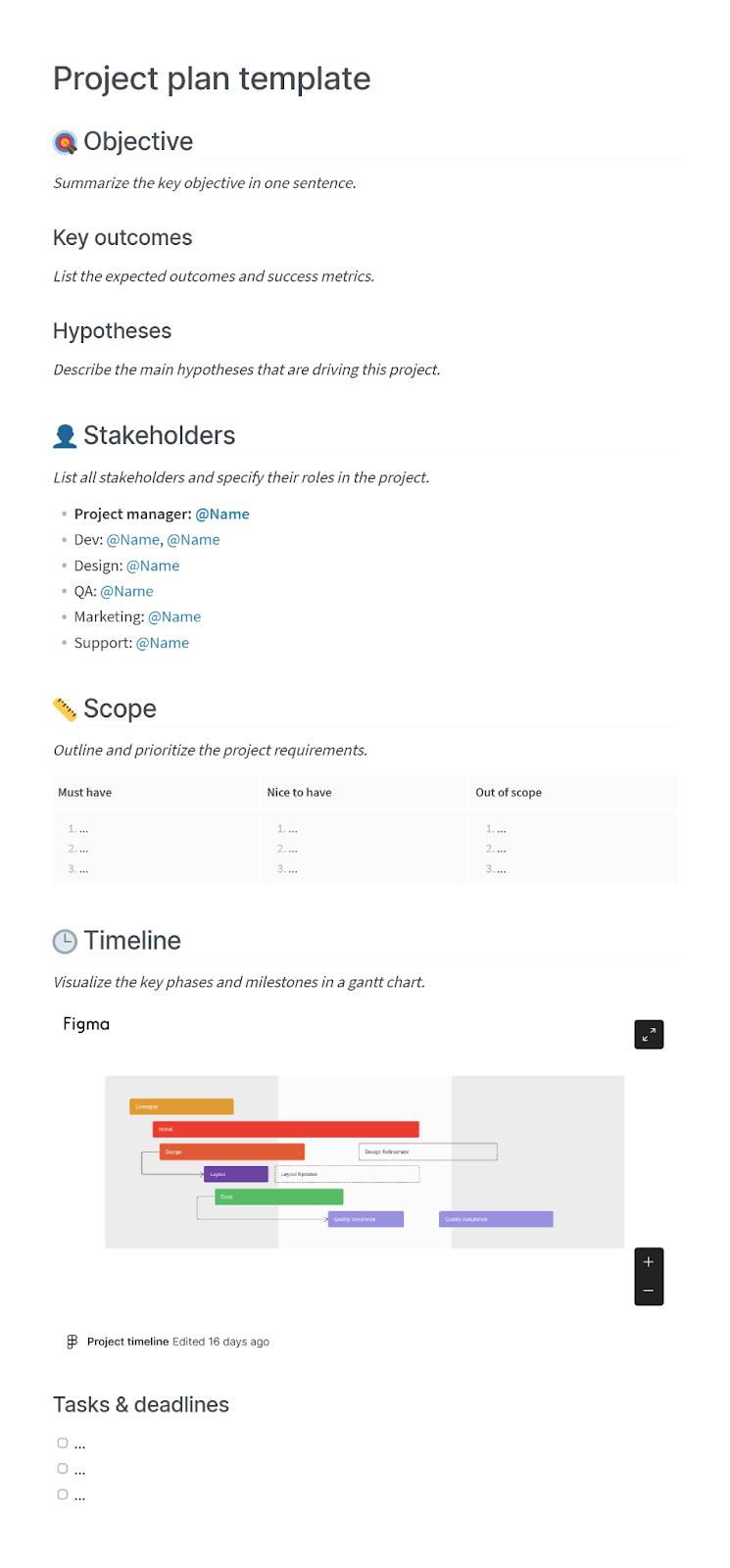
Workforce Management, Time & Attendance, Excellence presented by HR.com May 2023 26 Submit Your Articles
Image: Source
Image: Source
3. Delegate tasks by skill set and urgency
This is the most critical step of the process that will determine the overall success of your workload
management. There are plenty of project prioritization techniques, such as the Eisenhower Matrix, Kano Model, or MoSCoW analysis, that help ensure that the most urgent tasks are tackled first.


Workforce Management, Time & Attendance, Excellence presented by HR.com May 2023 27 Submit Your Articles
How To Create An Efficient Workload Management Process
Decide on a technique and share the inputs with your team to help them understand what tasks are the highest priority. Again, using workload management software here is a good idea. These tools can help streamline project task priorities and handle workloads as per individual capacity.
4. Set performance expectations with your team
It is immensely important to set clear performance expectations with every member of your team. This will help to ensure project quality.
Clearly communicate the standards for delivery. In other words, explain to the team members what would qualify as a successfully completed project.
Communicating performance and delivery expectations will not only streamline the process of workload management but also ensure the final output is up to the desired standard. This will lead to better customer and stakeholder satisfaction.
5. Stay flexible and adapt as required
This step involves monitoring the project’s progress to ensure everything is on track.
You must regularly assess and evaluate your project and team performance and make any required changes to the plan. This may include re-evaluating priorities, shifting timelines, or seeking additional support.
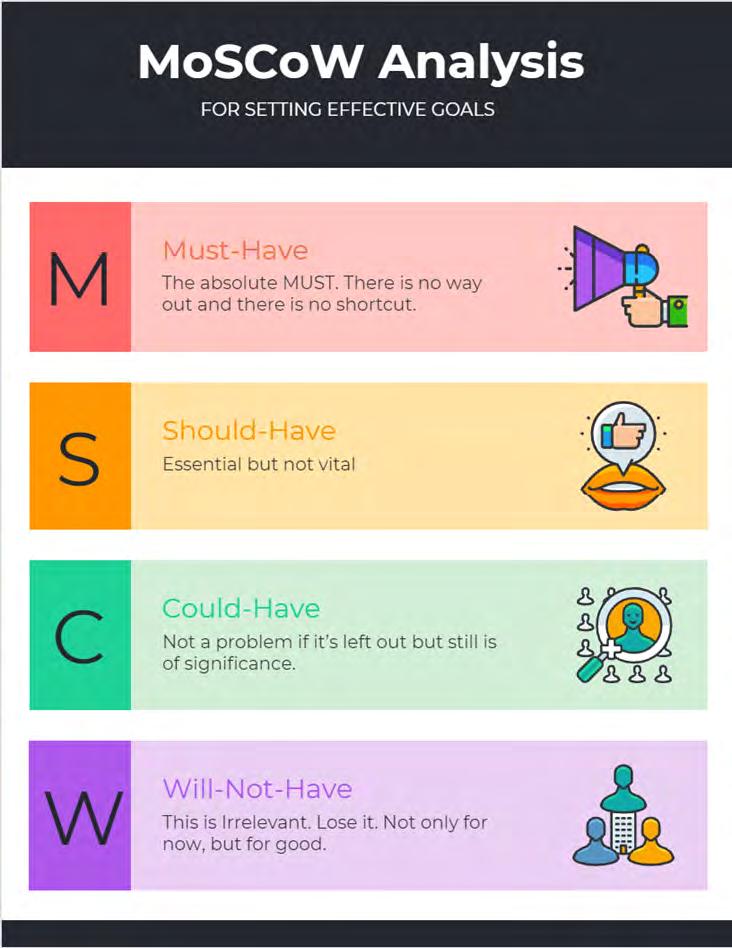
Workforce Management, Time & Attendance, Excellence presented by HR.com May 2023 28 Submit Your Articles
How To Create An Efficient Workload Management Process
Image: Source
Many times, unanticipated situations, such as a team member’s sickness, can throw the entire project into disarray. Therefore, you must have a mitigation strategy in place to guarantee the best results for your team and company.
Tips for Effective Workload Management
Managing workload effectively is often a challenging feat. Inevitably, you will run into some hold-ups while organizing your team’s workload. Here are some actionable tips that can come in handy.
1. Establish well-defined goals and objectives
Project managers must take time to clarify the foremost goals and objectives of the project. Setting well-defined goals makes it easier for every team member to understand what they need to accomplish and in how much time.

One of the best techniques for goal setting is SMART goals. Essentially, SMART in project management refers to Specific, Measurable, Achievable, Realistic, and Time-bound. Using this criterion of setting goals for your business can help boost its effectiveness.

every team member has and accordingly create a plan for their upcoming work. Such a strategy ensures that all resources (in this case, team members) are looked after so they stay productive without being overwhelmed.
3. Prioritize tasks
Task prioritization enables managers and employees to channel their daily focus by effectively pinpointing and working on the most urgent tasks first. Tasks can be prioritized based on importance, urgency, or even return on investment (ROI).
Make sure to tackle the most difficult and high-priority tasks first. Getting complicated tasks done early on can ease mental exhaustion and workload, especially when there is a looming deadline.
4. Accommodate diverse styles
A crucial aspect of the workload management plan is to understand that everyone works differently.
Image: Source
2. Create a resource management strategy
A resource management strategy offers adequate visibility into every individual’s bandwidth. Thus, project managers can understand how much work
For instance, some team members may prefer to work in time blocks. On the other hand, others may prefer tackling complex tasks early in the morning, keeping their evenings free for simpler administrative tasks. Try to establish work schedules that embrace the different needs of the different team members.
Workforce Management, Time & Attendance, Excellence presented by HR.com May 2023 29 Submit Your Articles
How To Create An Efficient Workload Management Process
5. Track and manage task durations
To manage your workload effectively, you must carefully monitor and review the time required to complete recurring project tasks. Once you have identified the workload requirements and assessed your team’s capacity, it may be helpful to implement HR software to streamline workload management and improve overall efficiency. This is crucial data that helps you ensure timely deliveries and cater to each employee’s abilities.

Review every individual’s progress and adjust their workloads if you find them struggling to complete
tasks. Encourage them to utilize their time more efficiently and minimize distractions during work hours.

Conclusion
Workload management is a fundamental part of overall project management. It helps to guarantee timely delivery while helping the team to stay productive. Using simple workload management strategies can greatly boost the chances of your project success, utilize resources in the best way and increase your team’s morale and overall productivity.
Would you like to comment?
Workforce Management, Time & Attendance, Excellence presented by HR.com May 2023 30 Submit Your Articles
Charu Gupta is an Outreach Specialist at Groww with over 4 years of experience in digital marketing.
How To Create An Efficient Workload Management Process
6 Ways HR Can Build Trust And Manage Employees At Workplace
Building a positive workplace culture in a hybrid and remote work era
By Jennie Yang, 15Five
Trust is foundational to every successful relationship. Workplace relationships are no exception, whether between employees, employees and their managers, or employees
and
leadership.
Human resources (HR) can lead the effort to cultivate a high-trust work environment that benefits everyone’s growth and success by identifying opportunities for relationship-building and leveraging measurement and methodology.
Building trust with your employees benefits your organization’s short- and long-term health, funneling a cascading positive effect to multiple areas in the workplace — increasing employee engagement and psychological safety, decreasing stress, and improving individual performance, organizational alignment, collaboration, and retention. The result is a more positive workplace culture — much needed in the hybrid and remote work era.
According to the Harvard Business Review, employees at high-trust companies report 106% more energy at work, 76% more engagement, 74% less stress, 50% higher productivity, 40% less burnout, 29% more satisfaction with their lives, and 13% fewer sick days.
When trust is cultivated and sustained, it can strengthen manager-employee relationships, which in turn supports strategic HR outcomes like improved employee engagement and performance. On the flip side, in the absence of trust, manager-employee relations often suffer, negatively impacting goals like lowering regrettable turnover.
Here are six ways that HR leaders can foster a high-trust work environment.
1. Measure Employee Trust
A great place to start is to lean into existing methods for gathering employee feedback and measuring employee engagement. An easy way is to include trust-related questions in weekly check-ins or employee engagement surveys. This can be as simple as using a rating scale to assess how employees agree or disagree with statements like, “I trust the other people on my team” or “I trust my manager".
The answers can provide valuable insight into your organization’s trust levels and enable HR to leverage the responses to make improvements and track changes over time. Plus, survey results from teams and managers can help pinpoint areas that need additional guidance or support.
Workforce Management, Time & Attendance, Excellence presented by HR.com May 2023 31 Submit Your Articles
TOP PICK
2. Advocate for Goal Transparency
Prioritizing goal alignment and transparency can play a significant role in improving trust in the workplace. In his research on team conflict at General Electric, Noel Tichy found that unclear or misaligned goals caused over 90% of team conflicts.
Additional research from MIT Sloan acknowledges that only 28% of executives and middle managers responsible for executing strategy could list three company strategic priorities.
Implement a universal goal-setting methodology, such as OKRs (objectives and key results), that gives every manager and individual contributor a view of objectives at all levels of the organization and how they are connected. The transparency achieved eliminates ambiguity and confusion and ensures everyone understands what they are working toward. This knowledge is empowering, increasing trust and motivation among your employees to follow through on those objectives.
3. Build Feedback Loops
Establish consistent feedback processes that provide opportunities for constructive feedback and growth. An annual performance review is inadequate for improving performance or trust — there needs to be consistent and operationalized touchpoints to exchange feedback throughout the year.
Encourage regular touchpoints between managers and employees, such as weekly check-ins and one-onone meeting agendas. These check-ins can include questions about the employee’s progress on their priorities and more personal/wellness-focused questions, such as “Is there anything you are worried about or anything I can help you with?”
Then go one step further. Ensure that managers are having regular “face-to-face” conversations with their direct reports, either in-person or virtual. These touchpoints facilitate real-time conversations, where employees and managers have unedited dialogue that is authentic and sometimes vulnerable. A feedback
conversation that moves forward helps strengthening the manager-employee relationship.
4. Create Space for Recognition and Gratitude
As an HR leader, you are essential in cultivating a culture of gratitude in your organization and creating a workplace where all employees feel valued, respected, and appreciated.
Research shows that a bit of appreciation can go a long way in the workplace — 81% of employees report that they are more motivated to work hard when their boss shows appreciation for them, and 53% of employees said that receiving more appreciation from their manager would make them want to stay longer at the company.
Historically, HR leaders have relied on the hope that their managers are vocally recognizing their employees’ accomplishments or writing them thank-you notes — methods that are hard to track.
But technology can now give HR visibility when an employee is recognized for a job well done. Employee recognition software — especially one that enables employees to give each other public “shoutouts” — can promote employee appreciation and gratitude as a core part of the company culture in an operationalized, trackable, and scalable way. It also helps to hold managers accountable for building an authentic culture of recognition gratitude, and increased trust.
5. Foster Diversity, Inclusion, Equality, and Belonging
Promoting DEIB goes together with maximizing trust in the workplace, as it helps to create an environment where all employees feel safe, supported, valued, and respected.
HR must pave the way by implementing policies and processes demonstrating that the company values and welcomes diversity, like ensuring that recruitment and hiring are focused on diverse candidates, people are paid fairly, promoted equitably, and given equitable opportunities to succeed.
Workforce Management, Time & Attendance, Excellence presented by HR.com May 2023 32 Submit Your Articles
6 Ways HR Can Build Trust And Manage Employees At Workplace
This will establish a baseline level of trust that the workplace is a safe, welcoming environment for all employees and that all employees are valued and treated with respect, regardless of their background, age, identity, or ability. Leaders must also address challenges of existing exclusion, inequity, and discrimination within the organization.
HR must do more than set the tone. Managers are crucial in creating and leading inclusive teams, where psychological safety is high, collaboration is the norm, and innovation can thrive. So much of HR’s ability to move the needle on trust in the workplace relies on the day-to-day interactions that managers have with their teams and the level of priority that managers put on creating trust and safety for their teams.
6. Train Managers/Leaders to Build Trust
HR leaders should invest in leadership training and development programs to equip managers with the skills and coaching necessary to foster trust. Training programs can cover topics like building strong relationships and implementing trust-building strategies. This investment can lead to employees and managers establishing new and more dynamic communication cadences, boosting trust between
managers and employees, and helping teams stay focused, motivated, and more aligned with company goals.
Building trust can feel like an abstract concept, but HR leaders can significantly boost its practice in the workplace. By implementing proven processes and structures to foster trust, HR can improve employee engagement, performance, retention, and manager effectiveness and help create a more successful workplace for everyone.

Jennie Yang is VP of People & Culture at 15Five. Jennie is a strategic and operational consulting leader with over 12 years of experience designing business strategies and driving organizational transformations for Fortune 500 companies.
Would you like to comment?

Workforce Management, Time & Attendance, Excellence presented by HR.com May 2023 33 Submit Your Articles
6 Ways HR Can Build Trust And Manage Employees At Workplace
Paid Flexible Leaves
How employers can satisfy all obligations under the Labor Standards Act
By Eveline Poirier, Stikeman Elliott
SinceJanuary 1, 2019, the Act respecting labor standards (the “Act”) provides that employees with three (3) months or more of uninterrupted service are entitled to up to two (2) days of paid absence per year due to sickness, an organ donation, an accident, domestic violence or sexual violence or for reasons relating to the care, health or education of family members. Before this legislative change, no such absence had to be paid under the Act.
The requirement to pay the first two days of absence due to sickness or to fulfill a family obligation soon created a problem for employers who already offered their employees paid leave in addition to their annual vacation under a policy, employment contract, or collective agreement. Since this legislative change came into force, several decision-makers have had to analyze the leaves offered to employees to determine whether their employment conditions met the minimum under the Act or whether the employer had to give them additional paid leave based on the new provisions of the Act.
The case of Maax Bath inc. et Syndicat des salariés d’acrylique de Beauce (CSD), [1] described below, arose out of such a situation.
The Facts
In that case, the employees are governed by a collective agreement entered into on October 1, 2016, between Maax Bath Inc. (the “Employer”) and the Syndicat des salariés d’acrylique de Beauce (the “Union”). The collective agreement contains terms
providing for unpaid personal leave and paid floating holidays, among others. More specifically, employees may be absent from work without pay for fifteen (15) days per year to fulfill family obligations, and employees with at least one (1) year of seniority are entitled to four (4) or six (6) paid floating holidays, which are cashable if unused.
During January and February 2019, three (3) employees were absent from work due to sickness or to fulfill family obligations. They asked to be paid based on the new provisions of the Act, which the Employer refused, claiming that they could use their paid floating holidays under the collective agreement.
On February 15, 2019, the Union filed a group grievance on behalf of the three (3) employees, arguing that the floating holidays under the collective agreement had not been negotiated and included in the agreement to be used for family obligations or sickness. In the Union’s view, the Employer’s refusal to pay employees leave for family obligations or sickness contravenes the Act, is in breach of the collective agreement, and is contrary to the parties’ intention to treat the use of floating holidays differently from days off for family obligations and sickness.
The arbitrator, therefore, had to determine whether the terms of the collective agreement relating to leave for family or parental reasons, and more specifically those granting floating holidays, were employment conditions that were as advantageous as those prescribed by the Act.
Workforce Management, Time & Attendance, Excellence presented by HR.com May 2023 34 Submit Your Articles
The Arbitrator’s Decision
After analyzing the evidence, the arbitrator noted that the floating holidays provided for in the collective agreement are not granted to employees for specific reasons. Employees may take them for any reason without having to give any justification whatsoever, provided a written request is made to the supervisor at least 14 days before the desired date (unless there is a valid reason justifying the request for leave, including sickness and family obligations, in which case the employer does not apply the time limit). In this context, the arbitrator believed that the Employer had not contravened the Act in the case of the absences of the three (3) employees covered by the grievance.
However, in light of the jurisprudence, the arbitrator held that he could not dismiss the grievance in its entirety.
The arbitrator noted firstly that, according to the collective agreement, an employee with less than one (1) year of seniority cannot take advantage of floating

holidays, which, according to the Employer, would be equivalent to the two days of paid leave prescribed by the Act. Under the Act, this right vests after three (3) months of uninterrupted service.
He noted that if an employee uses all the floating holidays to which they are entitled during a given year for personal reasons other than sickness and family obligations, that employee could lose the right to paid leave later due to sickness or family reasons if they needed leave during the same year. According to the arbitrator, this goes against the provisions of the Act:
[Translation] [48] One would then be in a situation in which, if an employee legitimately takes advantage of a negotiated benefit under the collective agreement, they would lose the right to take advantage of a minimum standard under a law of public order.
[49] It cannot be presumed that the legislator’s intention was that taking advantage of a benefit under the collective agreement would lead to the loss of a right prescribed by the Act.
Workforce Management, Time & Attendance, Excellence presented by HR.com May 2023 35 Submit Your Articles
Paid Flexible Leaves
In the two situations described above, the arbitrator held that the Employer should pay employees with more than three (3) months of service at least two (2) days of leave per year for sickness or family obligations even if they had used up their floating holidays if those days were used previously for other reasons.
Application for Judicial Review
On July 24, 2020, the Employer filed an application for judicial review in the Superior Court to contest the arbitrator’s decision.
On July 12, 2021, Justice Claudia P. Prémont dismissed the Employer’s application for judicial review and upheld the arbitrator’s decision, ruling that it was reasonable.
Decision of the Quebec Court of Appeal
On November 3, 2021, the Employer presented a motion for leave to appeal the judgement rendered on July 12, 2021, by Justice Prémont. In the motion, the Employer argued, among other things, that this matter raised a new issue since the Quebec Court of Appeal had not yet ruled on the application of the provisions of the Act involving days of absence due to sickness and family obligations in existing employment contracts.
Considering that it was in fact a new issue, the Quebec Court of Appeal allowed the Employer’s motion for leave to appeal.
On January 24, 2023, the Honourable Simon Ruel, Sophie Lavallée and Peter Kalichman, JJ.A., of the Quebec Court of Appeal (the “court”) dismissed the Employer’s appeal and upheld the decision rendered by Justice Prémont, holding that the decisions rendered by the arbitrator and the Superior Court were reasonable.
First, the court pointed out that in order to determine whether the provisions of the collective agreement provide for conditions that are as advantageous as those of the Act regarding paid leave for sickness or family obligations, the arbitrator first had to consider
whether the working conditions under the collective agreement were of the same kind and had the same purpose as those of the labor standard before deciding whether the contractual provision is at least as advantageous as the labor standard.
The Court found that the arbitrator could have concluded that the clause in the Employer’s collective agreement providing for paid floating holidays was not of the same kind and did not have the same purpose as the provisions of the Act, in particular owing to the requirement that floating holidays need to be pre-approved and the fact that the leave provided for in the Act is intended to promote work-family balance (while the floating holidays under the collective agreement can be used for different purposes, without having to give any justification).
The court also found that the arbitrator could have decided that the floating holiday clause did not provide for conditions that were equivalent to the provisions of the Act. In the two situations the arbitrator raised in his decision, that is, where employees have less than one (1) year of service and where employees have used up their floating holidays, the Court acknowledged that the collective agreement does not provide for conditions that are equivalent or superior to the provisions of the Act.
Lastly, the court found that, contrary to the employer’s allegations, there is no duplication of fringe benefits. The court pointed out that the legislator provides minimal protection that must be applied if the collective agreement does not provide for an equivalent benefit.
The court, therefore, found that there was nothing inconsistent in the arbitrator’s decision to maintain the group grievance but dismiss the claim of the three employees. The arbitrator correctly acknowledged that floating holidays can be used for sickness or family obligations but was of the opinion that according to the provisions of the collective agreement, in the two specific situations set out above, the employees could not benefit from the rights provided for in the Act. The court found that the labor standards must therefore be applied in these situations.
Workforce Management, Time & Attendance, Excellence presented by HR.com May 2023 36 Submit Your Articles
Paid Flexible Leaves
In light of the above, the court dismissed the employer’s appeal.
Main Teachings
This Quebec Court of Appeal decision serves as a reminder of the importance of carefully drafting one’s policies and agreements with respect to floating holidays and other types of leave. If the leave provided for in the policies and collective agreements is insufficient to satisfy the employer’s obligations under the applicable legislation, the employer could be required to provide additional paid leave, as required by law.

[1] Maax Bath inc et Syndicat des salariés d’acrylique de Beauce (CSD) (grief syndical), 2020 QCTA 316; Maax Bath inc. c. Racine, 2021 QCCS 2885 (application for judicial review denied); Maax Bath inc et Syndicat des salariés d’acrylique de Beauce (CSD), 2021 QCCA 1650 (motion for leave to appeal allowed); Maax Bath inc. c. Syndicat des salariés d’acrylique de Beauce (CSD), 2023 QCCA 102.
DISCLAIMER: This publication is intended to convey general information about legal issues and developments as of the indicated date. It does not constitute legal advice and must not be treated or relied on as such. Please read our full disclaimer at www.stikeman. com/legal-notice
Eveline Poirier is a Partner in the Employment & Labour Group at Stikeman Elliott. She routinely provides clients with strategic advice to reduce risks for their businesses and resolve disputes. She possesses vast experience in conducting litigation on a broad range of employment and labor matters before both provincial and federal arbitrators, boards, tribunals, and courts.
Would you like to comment?

Workforce Management, Time & Attendance, Excellence presented by HR.com May 2023 37 Submit Your Articles
Paid Flexible Leaves
Paid Vacation: Why Is The U.S. Trailing Behind The Rest Of The World?
Time off from work is integral to good mental and physical health, sustained productivity, and high performance
By Mairead Walsh, Softworks
Paid time off (PTO) however had been catching on in countries outside the United States. The Treaty of Versailles, which ended World War I in 1919, called for nations to regulate working time and rest periods. However, in the United States, employers vehemently fought against interference from the government in their business affairs.
Over 120 years later, all proposed national laws mandating American businesses to give employees paid leave have been unsuccessful. The Fair Labor Standards Act (FLSA) does not require payment for time not worked, such as vacations, sick leave, or federal or other holidays. Instead, these benefits are matters of agreement between an employer and an employee (or the employee’s representative).

How the United States Compares with Other Developed Countries
Back in 1910, President William Howard Taft proposed that American workers should have three months of paid vacation every year to give them a chance to rest, so they could continue their work the following year. Well, obviously that proposal did not come to fruition – nice as it might have been for employees.
According to the Center for Economic and Policy Research, the United States is the only country without a paid annual leave policy. In their report, No-Vacation Nation1, no city or state in the United States guarantees paid annual leave with the exception of the U.S. territory, Puerto Rico.
1 No-Vacation Nation, by Adewale Maye, May 2019
Workforce Management, Time & Attendance, Excellence presented by HR.com May 2023 38 Submit Your Articles
TOP PICK
Compare this to the European Union’s Working Time Directive that guarantees European workers at least 20 paid vacation days per year, with some countries mandating as many as 25 to 30 days per year. Australia and New Zealand require employers to grant workers a minimum of 20 paid vacation days per year, while Canada and Japan require their employers to provide at least 10 paid vacation days.
The growing disparity between the United States and the rest of the world is even more pronounced when taking into account legally mandated paid holidays. Most developed countries offer a number of paid holidays a year as well as paid vacation, while the United States provides none. Spain leads the table, offering 14 paid holiday days, with Austria, Germany, and Portugal hot on their heels with 13 paid holiday days.

Workforce Management, Time & Attendance, Excellence presented by HR.com May 2023 39 Submit Your Articles
Paid Vacation: Why Is The U.S. Trailing Behind The Rest Of The World? 30 28 25 25 25 25 25 25 22 20 20 20 20 20 20 20 20 20 10 10 0 1 0 13 9 11 10 14 11 13 8 10 13 11 9 10 9 11 4 9 15 0 5 10 15 20 25 30 35 40 45 France United Kingdom Austria Denmark Finland Norway Spain Sweden Portugal Australia Belgium Germany Greece Ireland Italy Netherlands New Zealand Switzerland Canada Japan United States Paid Vacation and Paid Holidays, OECD Nations, in Working Days Paid Vaca�on Paid Holidays
Employers’ Approach to Paid Vacation
While American workers are not legally entitled to any paid holidays, in reality, most U.S. employers do offer some paid vacation time. The number of days obviously varies from business to business, but on average, workers will get about ten days of paid holiday each year.
According to the US Bureau of Labor Statistics,2 after one year of employment, private industry workers received the following amount of annual paid vacation days:

● 8% received less than 5 days
● 31% received 5 to 9 days
● 34% received 10 to 14 days
● 18% received 15 to 19 days
● 7% received 20 to 24 days.
● Only 2% received greater than 24 days
In our earlier table, we can see that with the exception of Canada all countries received at least 24 days of paid leave when you add vacation and holiday leave – only 2% of workers in the United States receive this amount after one year of service.
About one in four workers in the United States do not get any paid vacation time or holidays at all. This particularly affects lower-income workers, part-time employees, and small business workers who can least afford to be without paid vacation.
Workers Not Using Their Vacation Days
I was really surprised to discover that many American workers do not use up their vacation days even if they are lucky enough to have them. According to research from the U.S. Travel Association, Oxford Economics, and Ipsos3, even when they have vacation days, they do not use up all their days.
In 2018, and bearing in mind that was pre Covid-19 so travel was allowed, American workers left a record number of vacation days on the table. They left 768 million days, up 9% from 2017. Of the unused days, 236 million were forfeited completely, equating to $65.5 billion in lost benefits. More than half (55%) of workers reported they did not use all their allotted time off. They cited reasons such as cost, difficulty in getting away from work, and air travel hassles as being top barriers to travel.
How Long Working Hours Can Damage Your Health
2 U.S. Bureau of Labor Statistics - Who receives paid vacations?
3 Study: A Record 768 Million U.S. Vacation Days Went Unused in ‘18, Opportunity Cost in the Billions
According to the World Health Organization (WHO) and the International Labour Organization (ILO)4, long working hours are increasing deaths from heart disease and stroke. Long working hours led to 745,000 deaths from stroke and ischemic heart disease in 2016, a 29% increase since 2000.
Workforce Management, Time & Attendance, Excellence presented by HR.com May 2023 40 Submit Your Articles
4 Long working hours increasing deaths from heart disease and stroke
Paid Vacation: Why Is The U.S. Trailing Behind The Rest
Of The World?
According to their global analysis, they estimate that in 2016, 398,000 people died from a stroke and 347,000 from heart disease as a result of having worked at least 55 hours a week. Between 2000 and 2016, the number of deaths from heart disease due to working long hours increased by 42% and from stroke by 19%. The study also showed almost three-quarters of those that died as a result of working long hours were middle-aged or older men.
There are numerous studies that demonstrate the importance of taking time out from work to recharge the batteries. Employees who do not take time to recharge, risk exhaustion, burnout, lower job performance, stress, anxiety, and generally poor health. On the flip side, employees who take a vacation are happier, better performers, and less likely to suffer from poor health.


Conclusion
We know that the pandemic had a huge effect on how, when, and where we work, and it is looking like taking a vacation is finally becoming a higher priority for
American workers, who are sometimes referred to as workaholics. According to Allianz Partners USA’s 14th Annual Vacation Confidence Index5, now more than ever, Americans are claiming their vacation days and making time to travel a priority. The survey revealed that 57% of Americans took a vacation in 2022, up from 44% in 2021. 2022 marks the highest percentage of Americans who reported traveling since 2009 when the survey was first conducted.
Taking a vacation is essential to an employee’s health and well-being. Time off from work is integral to good mental and physical health, sustained productivity, and high performance. While it is unlikely any of us will ever get the three months of paid leave that President William Howard Taft proposed, I think we will see more American workers demanding more time off whether that is from negotiating contracts with employers or lobbying government representatives. Certainly, interesting times are ahead…
Workforce Management, Time & Attendance, Excellence presented by HR.com May 2023 41 Submit Your Articles
5 Travel kicks into overdrive as Americans use their vacation days with a vengeance
Paid Vacation: Why Is The U.S. Trailing Behind The Rest Of The World?
Mairead Walsh is the Chief Marketing Officer of Softworks. Would you like to comment?
Employee Cannabis Use – Prevalence, Implications and Solutions June 6, 2023 11:00 AM - 12:00 PM ET REGISTER Tackling Threats to Employee Financial Well-being: How and Why it’s Critical to your Business Success June 8, 2023 12:00 PM - 1:00 PM ET REGISTER 20 Minute Wellness Session to Get Your Day Started with Moon & Rune June 7, 2023 9:30 AM - 9:50 AM ET REGISTER Transform Hiring with the Greatest Overlooked Tool June 20, 2023 12:00 PM - 1:00 PM ET REGISTER VIRTUAL EVENTS & HR.COM WEBCASTS UPCOMING www.hr.com/upcoming_webcasts www.hr.com/virtualconferences View our Upcoming Webcasts Schedule and Register Today! View our Upcoming Virtual Conference Schedule and Register Today! WEBCASTS WEBCASTS VIRTUAL EVENTS The Future of Learning Technologies June 21, 2023 REGISTER The Future of Employee Well-being June 7-8, 2023 REGISTER The State of High-volume and Hourly Hiring June 20, 2023 REGISTER
Thank you for partnering with us!
Paychex, Inc. (Nasdaq: PAYX) is a leading provider of integrated human capital management software solutions for human resources, payroll, benefits, and insurance services.

LEARN MORE
" Sage enables organizations to thrive in today's digital world with AI-powered financials, planning, analytics, and HR solutions.

"
LEARN MORE
THANK YOU
Designing better ways to work by providing cutting-edge products and exceptional experiences within HR, Talent, Time Management, Benefits and Payroll.
LEARN MORE
Paycom (NYSE:PAYC) offers cloud-based human capital management software to help businesses streamline employment processes, from recruitment to retirement. With a robust suite of products including payroll, time and labor management.
LEARN MORE
ADVERTISE WITH
US











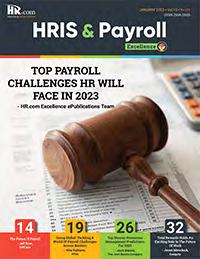
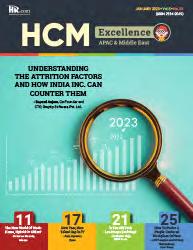
Like to submit an article? Use our online submission form or for more information go to www.hr.com/ExcellencePublications Publications 13 Targeted Publications to Reach Your Audience Informing, Educating, Enlightening and Assisting HR professionals in their personal and professional development, the Excellence series offers high-quality content through the publications!

















 Julie Winkle Giulioni Author, Virtual /Live Keynote Presenter, Inc.’s Top 100 Leadership Speakers
Julie Winkle Giulioni Author, Virtual /Live Keynote Presenter, Inc.’s Top 100 Leadership Speakers

































































